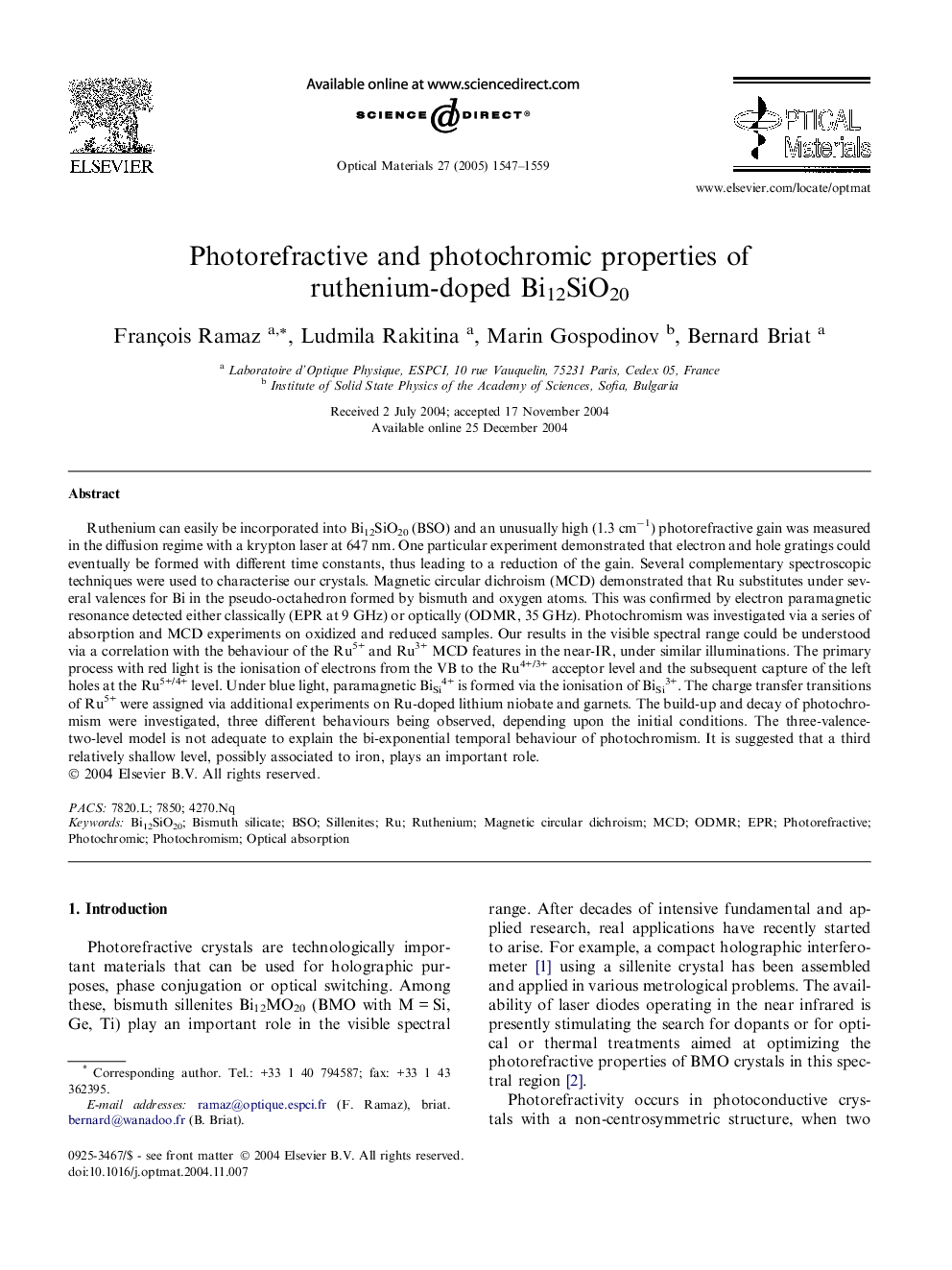| Article ID | Journal | Published Year | Pages | File Type |
|---|---|---|---|---|
| 10633490 | Optical Materials | 2005 | 13 Pages |
Abstract
Ruthenium can easily be incorporated into Bi12SiO20 (BSO) and an unusually high (1.3Â cmâ1) photorefractive gain was measured in the diffusion regime with a krypton laser at 647Â nm. One particular experiment demonstrated that electron and hole gratings could eventually be formed with different time constants, thus leading to a reduction of the gain. Several complementary spectroscopic techniques were used to characterise our crystals. Magnetic circular dichroism (MCD) demonstrated that Ru substitutes under several valences for Bi in the pseudo-octahedron formed by bismuth and oxygen atoms. This was confirmed by electron paramagnetic resonance detected either classically (EPR at 9Â GHz) or optically (ODMR, 35Â GHz). Photochromism was investigated via a series of absorption and MCD experiments on oxidized and reduced samples. Our results in the visible spectral range could be understood via a correlation with the behaviour of the Ru5+ and Ru3+ MCD features in the near-IR, under similar illuminations. The primary process with red light is the ionisation of electrons from the VB to the Ru4+/3+ acceptor level and the subsequent capture of the left holes at the Ru5+/4+ level. Under blue light, paramagnetic BiSi4+ is formed via the ionisation of BiSi3+. The charge transfer transitions of Ru5+ were assigned via additional experiments on Ru-doped lithium niobate and garnets. The build-up and decay of photochromism were investigated, three different behaviours being observed, depending upon the initial conditions. The three-valence-two-level model is not adequate to explain the bi-exponential temporal behaviour of photochromism. It is suggested that a third relatively shallow level, possibly associated to iron, plays an important role.
Keywords
Related Topics
Physical Sciences and Engineering
Materials Science
Ceramics and Composites
Authors
François Ramaz, Ludmila Rakitina, Marin Gospodinov, Bernard Briat,
